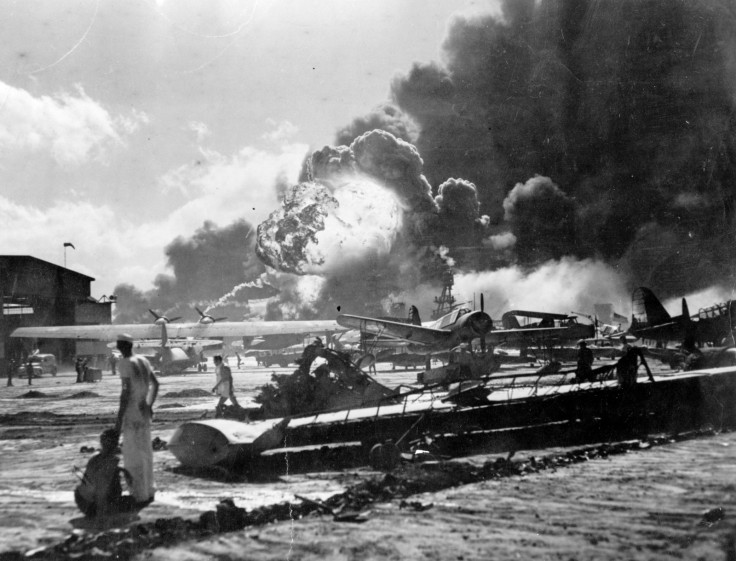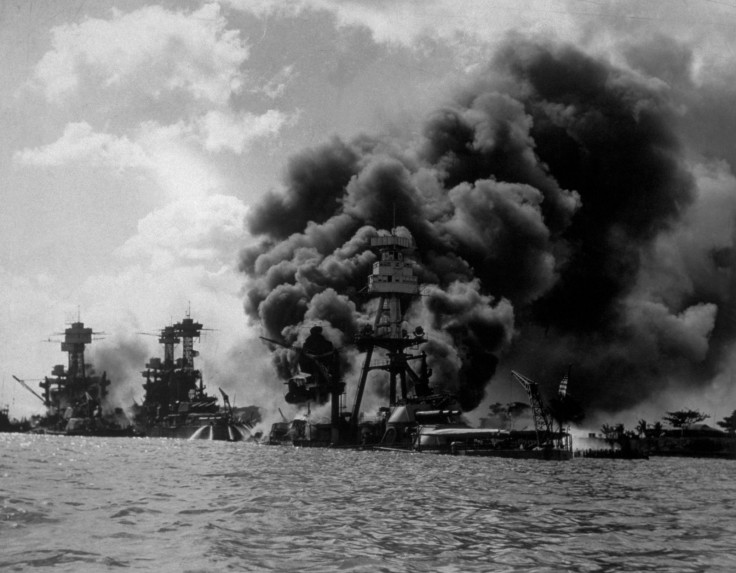Pearl Harbor 75th anniversary: What happened on 7 December 1941?
The attack by Japanese forces led to the United States' direct involvement in the Second World War.
The United States will mark the 75th anniversary of the attack on Pearl Harbor this week, when Japanese launched a 90-minute aerial assault on a US naval base in Hawaii. More than 2,000 Americans and 64 Japanese servicemen were killed in what Franklin D Roosevelt called "a date that will live in infamy". The Battle of Pearl Harbor sparked the US's direct involvement in the Second World War.
A number of events will take place in Hawaii to commemorate the 1941 bombardment. As the anniversary approaches, veterans who survived the attack are making their way to the Pacific island. Nobody knows how many survivors are still alive, but an estimated 2,000 to 2,500 were living in the US in 2013.
Among those returning to Hawaii for this week's anniversary is the oldest living survivor, 104-year-old Ray Chavez, who served on the USS Condor. "I never will forget as long as I live," he told NBC. "I'm not exactly a hero, because there were thousands of other heroes too, but I'm very proud of the honour bestowed on me."
What happened on the day?
On the morning of Sunday 7 December 1941, a Japanese bomber emerged from the clouds above the island of Oahu. More than 350 warplanes followed, launching an attack on the US Pacific Fleet, which was moored at Pearl Harbor, west of the Hawaiian capital of Honolulu. The aerial bombardment was carried out in two waves, beginning at 7:48am.
Although two radar operators spotted the aircraft shortly after 7am local time, a flight of US aircraft was expected at the time and no alarm was sounded. As it was a Sunday morning, many members of the Navy had been given passes to attend religious services off the naval base.

The attack lasted 90 minutes and devastated the base. More than 200 US aircraft were destroyed and eight battleships were hit, and many other ships were sunk or damaged beyond repair. Around 2,400 Americans were killed and a further 1,200 injured. More than half of the US casualties were on the USS Arizona, with many bodies still entombed in the ship. On the Japanese side, around 64 men were killed, 30 planes lost and five mini submarines sunk.
Following the attack on Pearl Harbor, President Roosevelt declared Sunday 7 December 1941 "a date which will live in infamy" and told Congress that the US was "suddenly and deliberately attacked by naval and air forces of the Empire of Japan". Three days later, Germany and Italy declared war against the US and vice versa, bringing the States into the Second World War.
At the time of the attack, relations between the US and Japan – which relied heavily on imports of American oil and steel – had broken down, and the rivalry over the Pacific between the two nations was intensifying. In the 1930s, Japan's imperialist expansion and growing military influence exacerbated tensions between the rival powers.
In September 1940, Japan signed the Tripartite Pact with Germany and Italy. Although Japan invaded French Indochina in July 1941, Roosevelt did not take direct action – but the Japanese Empire's imperial ambitions in the Pacific had created further tensions between the two countries. At the time, the US controlled the Philippines and had economic interests in the Pacific region.
When the US imposed oil sanctions on Japan, the state's response was to remove the US out of the Pacific with a surprise attack, which would allow Japan to conquer south-east Asia, a region rich in resources.

© Copyright IBTimes 2025. All rights reserved.





















